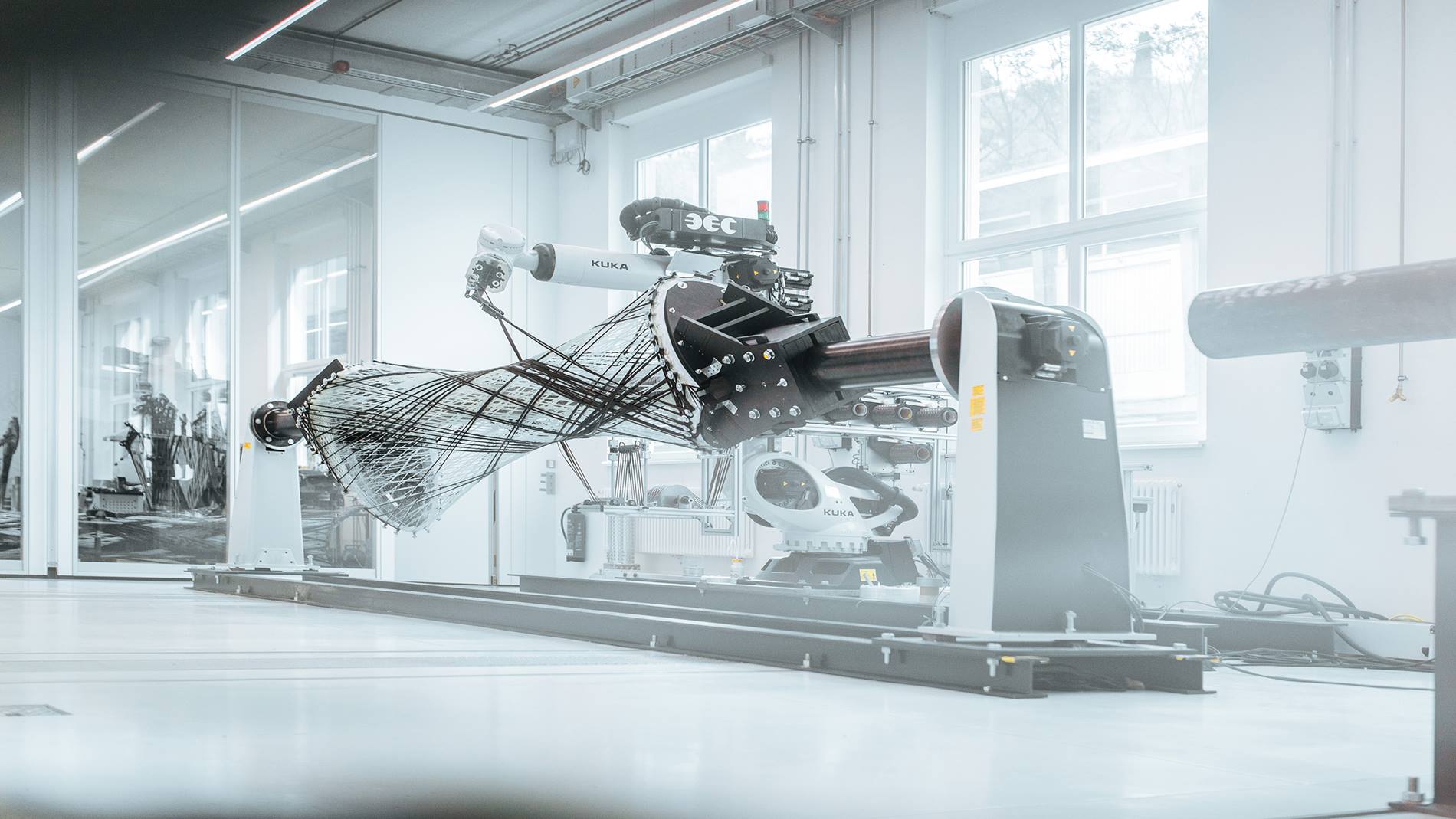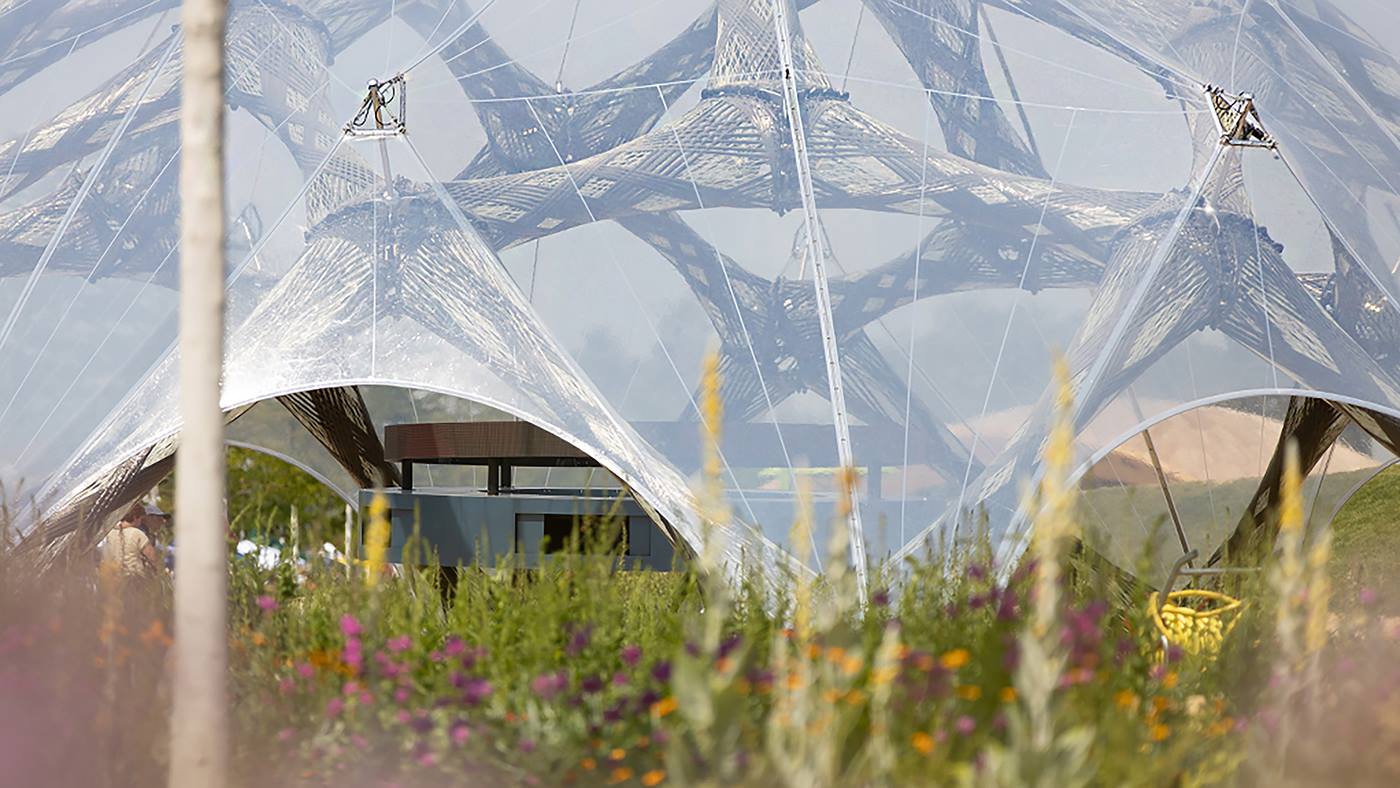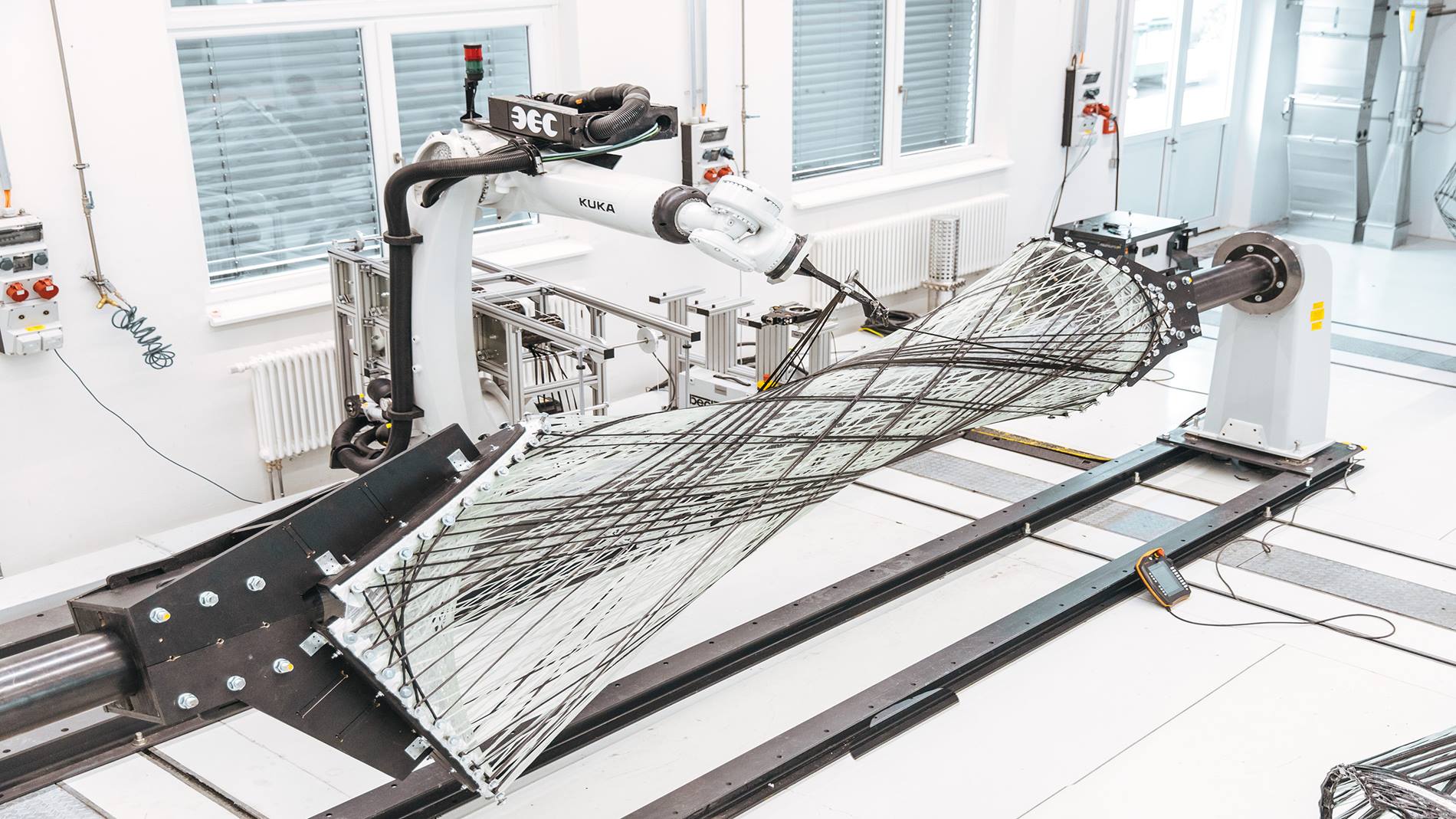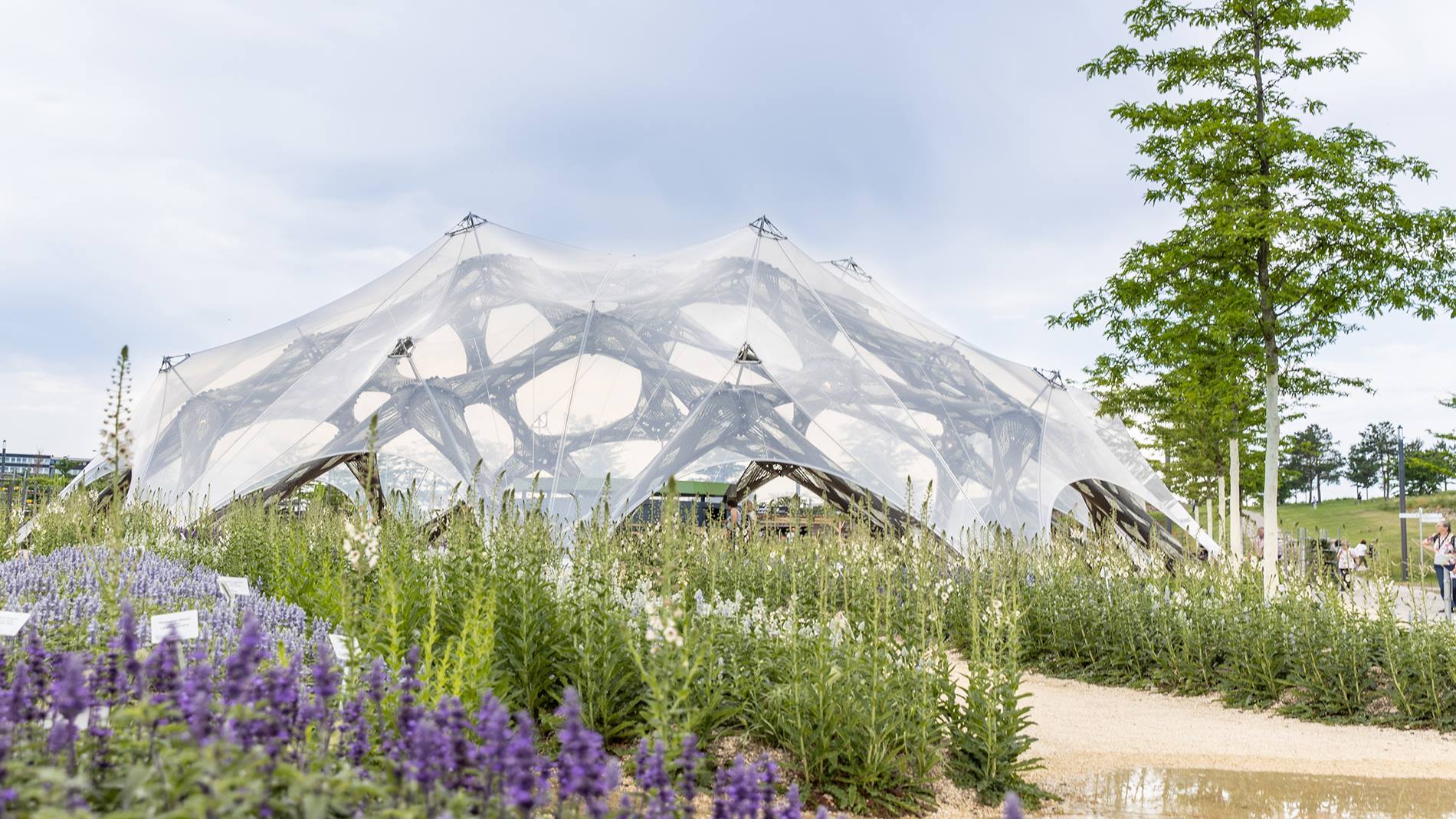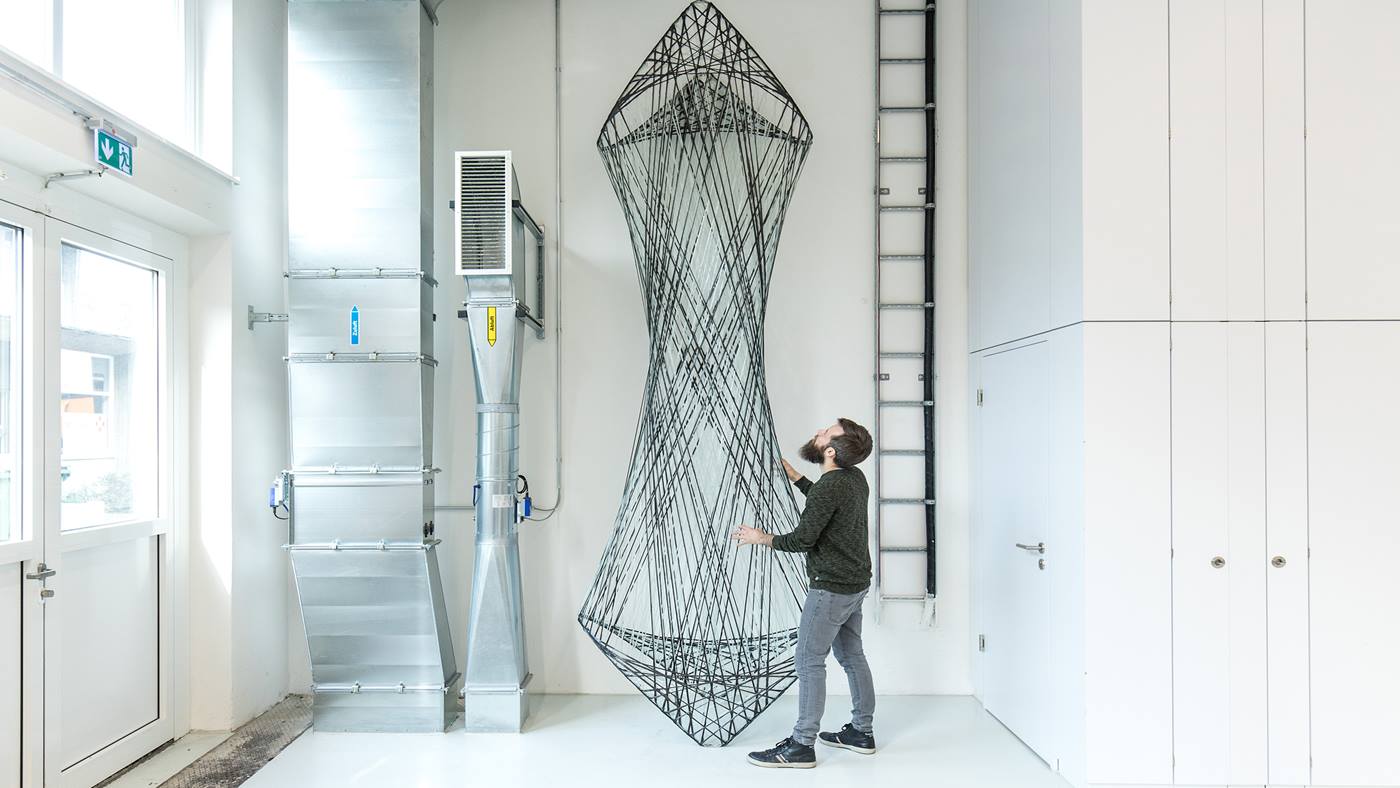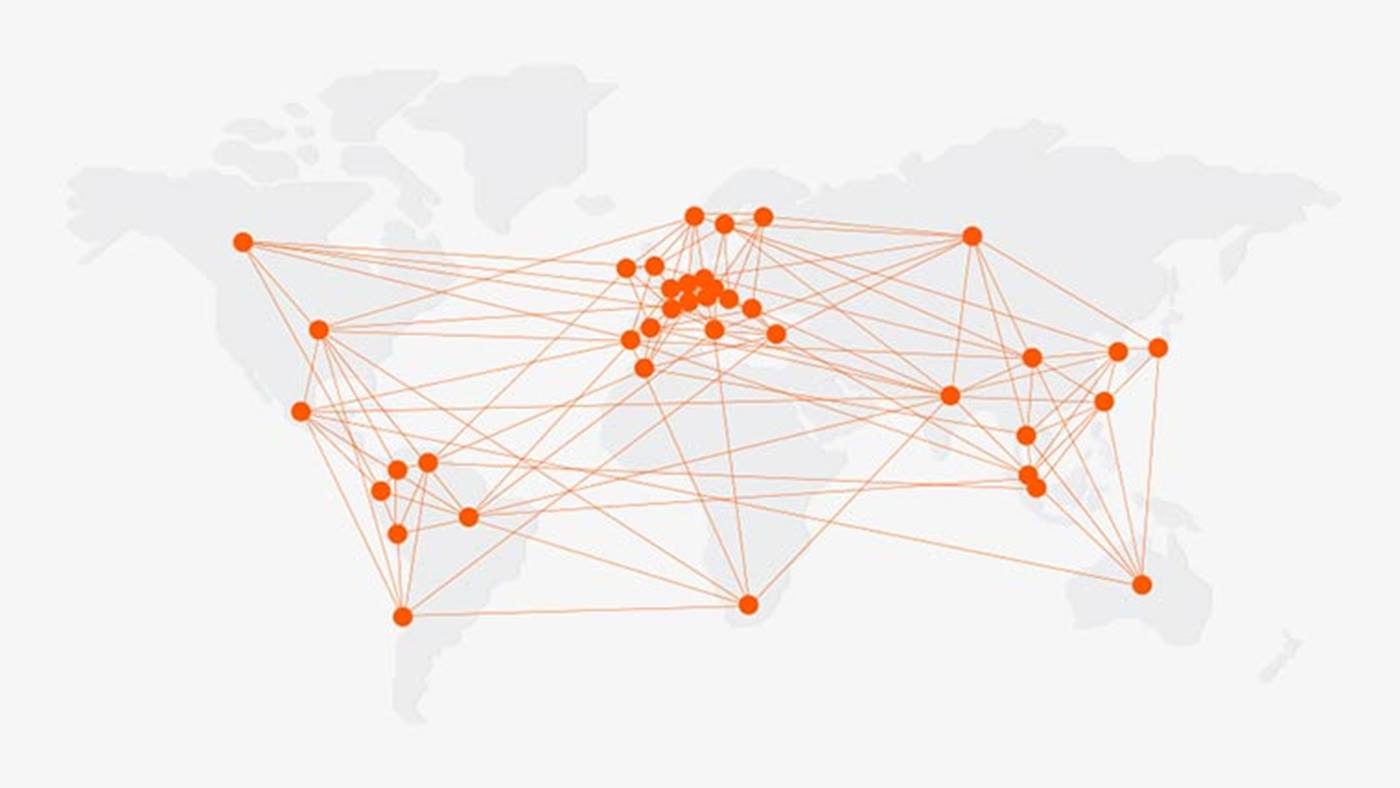New solutions for innovative architecture using robots
The pavilion consists of 60 components up to 6 meters in size. The special feature of the robotic fabrication process: despite their size, the elements do not have a core for laying up the fibers. “The supporting structure consists exclusively of fiber composite components. These are wound by construction robots using continuous glass and carbon fibers,” explains Christoph Zechmeister. The components are manufactured by FibR GmbH. “The design has a complexity that can only be implemented through the robotic fabrication process,” says Moritz Dörstelmann, Managing Partner. FibR GmbH specializes in the implementation of high-performance, expressive fiber composite structures by means of digital design and manufacturing technology.

